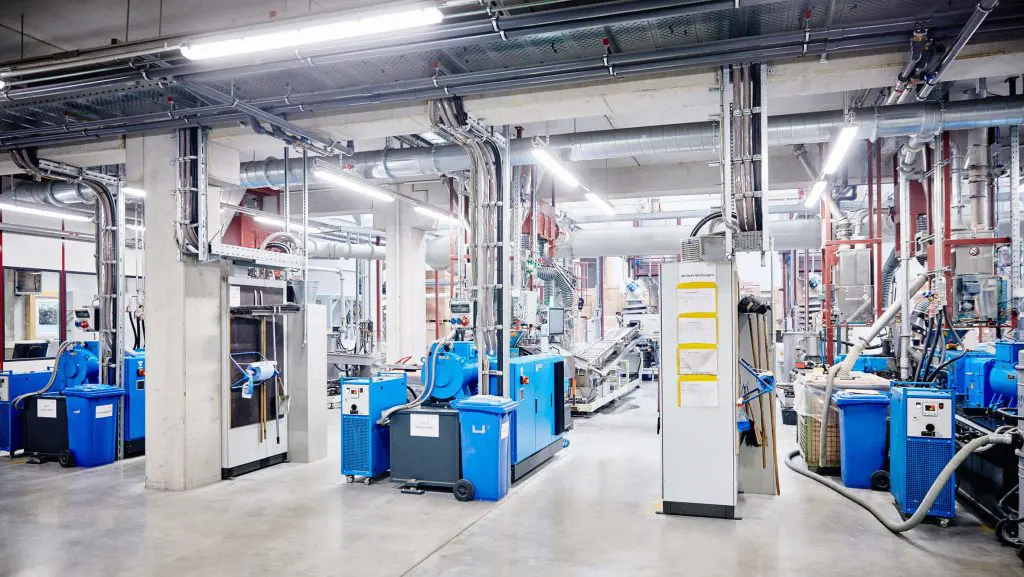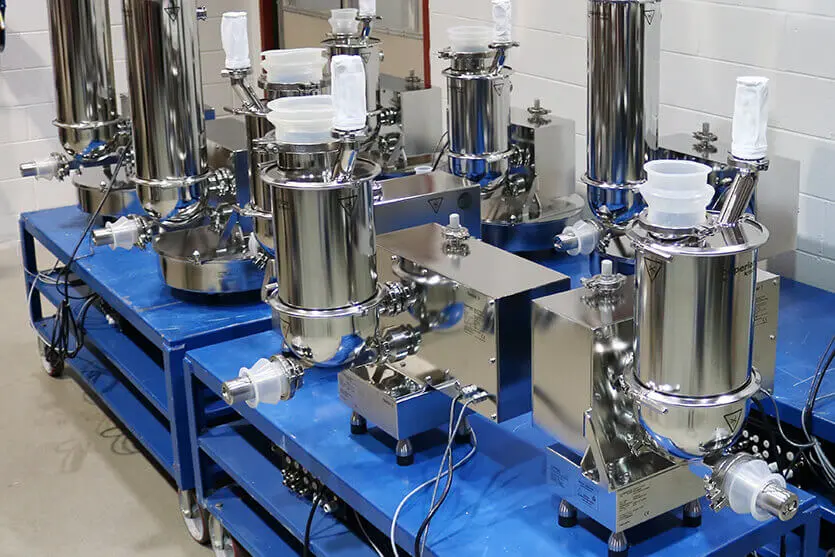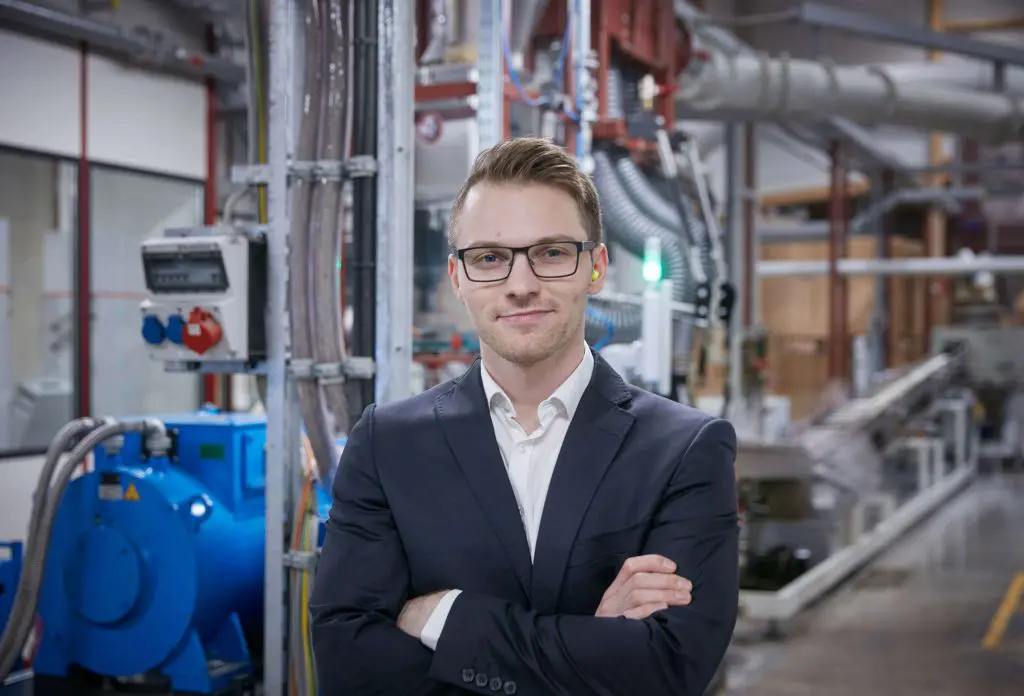Plastic scrap can enter a hopper in many different forms – cubes, pellets, and fibers – each with a unique particle shape, size, hardness, bulk density, moisture content, compressibility, cohesiveness and permeability. Feeding equipment specialist Coperion K-Tron knows there is no universal approach when it comes to tackling plastics.
In order to get metal content out when treating plastic scrap, Coperion systems have a magnet at the feeder inlet. ‘This has a retracting drawer so you can easily pull the metal contaminants out,’ says John Winski, director of sales at Coperion K-Tron.
‘Within the feeder itself, if operators have any concern about screws or things like that, you can also put a magnet at the discharge section, prior to the compounder.’ The best solution for a clean end product would be to put a magnet above or below the feeder.
‘Recycled plastics are unique in themselves in that how they’re processed will really decide how we will handle them,’ Winski says. ‘Different brands of the same material may act differently on your process equipment. It’s not as simple as getting them from point A to point B.’

Winski detailed the best available technologies for moving plastic scrap from a hopper into processing equipment during a recent e-conference organised by trade publication Plastics Technology.
Shredded bottle scrap is an ‘easy’ material to handle, Winski points out. It is much less challenging than things like low-density fluff from recycled carpet fibre. The latter is like taking a bundle of cotton and trying to pull it apart, he adds with a laugh. PET may be less tricky generally, but depending on the shredder that is being used, the flake size can vary quite a bit.
He cites two samples of green and translucent PET flakes and regrind that were analysed by lab technicians this month. ‘The interesting point is that there appeared to be duplicates in certain areas, though the material came from two different suppliers; the consistency holds true,’ Winski recalls. ‘One of the hang-ups is to ensure that this will feed long-term so that even if we have irregular particle sizes, our feeding solution is going to be proper.’
There are various types of feeders:
- Single screw
- Twin screw
- Vibratory
- Rotary valve
- Belt feeders
- Bulk solids bump
- Disc feeders
Operators are advised to choose a single-screw feeder with either an open flight screw or one with a closed-flight screw – preferably with a larger tube. Both are able to relieve pinch points that may restrict the flow of flakes from the storage bin into the machine below.
Winski explains: ‘If we tried to feed the material in a twin-screw feeder with concave screws, it would be a very poor choice, because the material would really get pinched into these screws and would lock the feeder up.’
For regrind of a consistent size, recyclers may opt for a rotary valve feeder. This will see the material drop from the hopper down into a series of revolving pockets. In that case, using a shear protector is vital, Winski urges. ‘So you don’t have to cut the feeder. If you don’t have a shear protector, it’s like putting material into a twin-screw feeder and you’ll have a pinch point.’
Pros and cons of rotary valves
- Simple design; allows free flowing of material
- Can be designed for explosion containment
- Not ideal for packing/cohesive materials
- No good control on product delivery
- Difficult to manage and clean
- Pulsating discharge
- Limited downturn capabilities

Poor and inconsistent feeding
Issues can also occur inside the hopper. ‘Plastic chips can become interlocked in the hopper. They can form so-called ratholes,’ Winksi notes, detailing how the material builds up along the lower sides of the hopper, constricting flow into the feeder bowl.’ Also, bridges of interlocked plastic may develop, completely clogging the flow into the feeder.
Solutions for improved hopper flow:
- Vertical agitation (for larger hoppers)
- Flexible elastomer liners
- Bin vibrators
- Air injectors (eg. ‘magic mushrooms’)
- Elastomer coatings
‘To avoid clogging issues, operators can use a proper agitator in the feeder bowl, which is located at the bottom of the hopper,’ Winksi explains. Doing so ensures material in the hopper drops into the lower portion of the feeder – at either a fixed speed or a variable speed – and discharges.
Of course, information is key. Winski underlines that all feeder producers can test a customer’s materials and provide detailed reports. ‘When comparing results, make sure you’re looking at the raw data and not the averaged data,’ he notes. ‘And when in doubt about any manufacturer’s ability to replicate the same results in the field under the same operating conditions – ask them to prove they can do it!’
Full circle
Jochen Schofer, business segment manager Recycling & Direct Extrusion at Coperion, is convinced that becoming circular is ‘unavoidable’ for the plastics industry. And yet, he laments that the share of recyclate used in plastics processing in Germany nowadays is little over 12%. Schofer hopes the company’s new client Aurora Kunststoffe will help boost the country’s recycling performance.
‘Coperion delivered not just three ZSK 45 extruders that were individually designed for us, and the appropriate strand pelletisers, but they also supported us with the engineering necessary for the entire production,’ comments Alexander Schweinle (pictured below), head of production at Aurora Kunststoffe. This is a welcome collaboration, he says, considering a large fire destroyed the entire production area in 2017.

Now, Aurora Kunststoffe produces over 50 tons of compounds per day. The company anticipates increasing demand in the next couple of years. ‘I am certain that sooner or later, there will be a legally mandated recycling quota,’ Schweinle says.
>> Find out more about Coperion.
Don't hesitate to contact us to share your input and ideas. Subscribe to the magazine or (free) newsletter.



